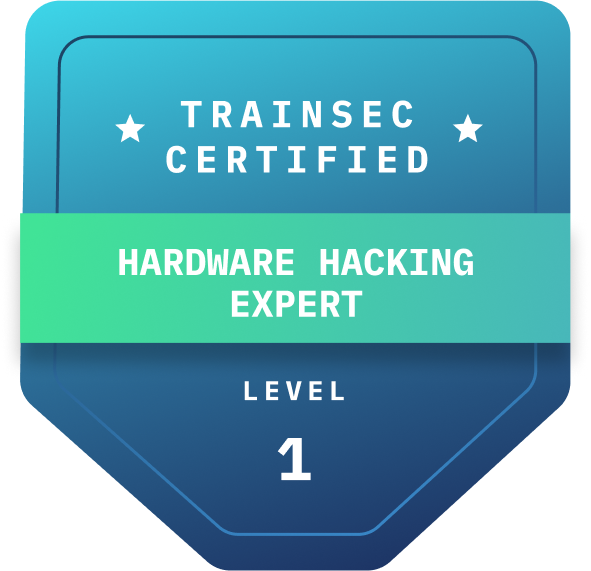
Transform yourself from a novice to a seasoned hardware hacking expert with our “Hardware Hacking Expert” certification. This comprehensive path, combining dynamic lectures and hands-on exercises, equips you with the skills, resources, and confidence to explore, manipulate, and exploit electronic systems. No prior hardware experience is required!
$1,550
or $75 X 10 installments
35+ hours
on-demand video
Assignments
In class assignments
33
Articles & lessons
10
downloadable resources
Cross-device
Access video on mobile too
Certification
Certificate of completion
By the end of this course, students will possess the knowledge, skills, and practical experience needed to excel in the field of hardware hacking, ready to tackle advanced challenges and contribute to cybersecurity efforts in embedded systems.
Hacker state of mind
Amichai is a veteran systems and electronics engineer, inventor, and cybersecurity researcher, also known as @The_H1tchH1ker. With more than 30 years of experience, he has worked on embedded systems, hardware design, and advanced security solutions. As a trainer at TrainSec Academy, he combines deep technical expertise with practical case studies, making complex concepts in hardware hacking and embedded security accessible and actionable.
Amichai’s expertise spans firmware extraction, reverse engineering, and hardware exploitation techniques. He has mastered communication protocols including UART, SPI, I2C, USB, CAN, and JTAG, which are crucial in IoT and OT devices. His training emphasizes both offensive and defensive perspectives. Teaching how attackers exploit embedded systems and how professionals can harden them. This dual perspective positions him as a leading expert in practical cybersecurity for modern embedded and industrial environments.
Start your journey with Level 1, where you’ll dive deep into the fundamentals of embedded systems. You’ll uncover the scientific theories, concepts, methodologies, and toolkits that are the backbone of successful hardware hackers. By the end of this course, you’ll be able to dismantle any electronic device, identify and understand each component, and possess the expertise to launch successful attacks on almost any device.
Even if you have a background in electronics or are an experienced engineer, this course offers invaluable insights that can only be gained through hands-on field experience, like disarming an alarm system using a single passive component.
Our course is meticulously designed for aspiring hardware hackers, covering everything from the basics of embedded systems to advanced techniques for identifying and exploiting vulnerabilities. You’ll master essential tools, interpret datasheets, and delve into a variety of communication protocols, both wired and wireless. Each step is reinforced through practical demonstrations and hands-on exercises, ensuring you gain real-world skills.
The course culminates in a final challenge that lets you apply your newfound knowledge in a realistic scenario, confirming your status as a proficient hardware hacker. Join us and become part of an elite group capable of tackling advanced hardware challenges and contributing to cybersecurity efforts globally.
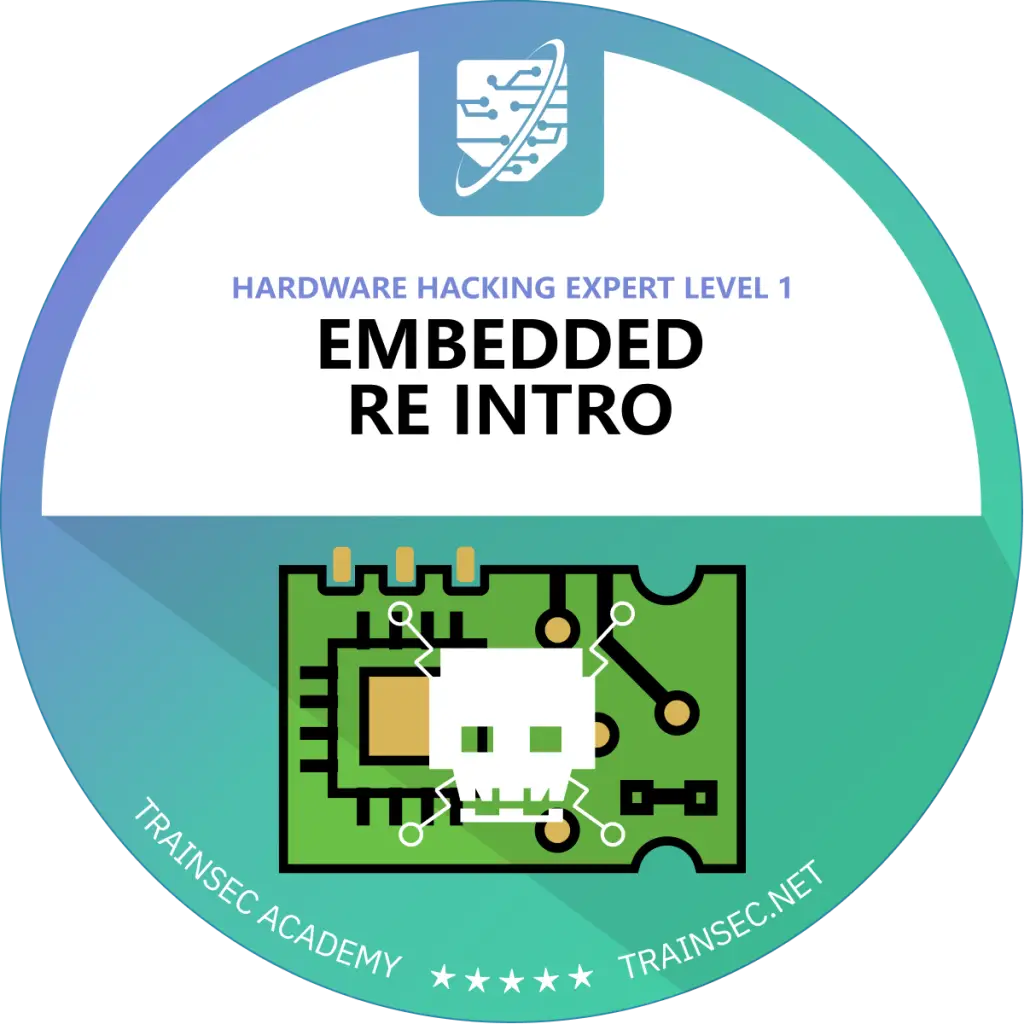
This class provides a comprehensive overview of embedded systems, starting with what they are and why they are important. It introduces high-level components and defines potential attack surfaces. Key topics include processors, power supplies, timers, memory, input/output circuitry, communication ports, system-specific circuitry, secret ports, and attack vectors. Real-life examples and further reading resources are included to reinforce learning.
Student Achievements: By the end of this class, students will understand the fundamental concepts of embedded systems, recognize the main building blocks and their functions, and identify high-level attack surfaces. They will be equipped with the knowledge to start analyzing and hacking embedded systems.
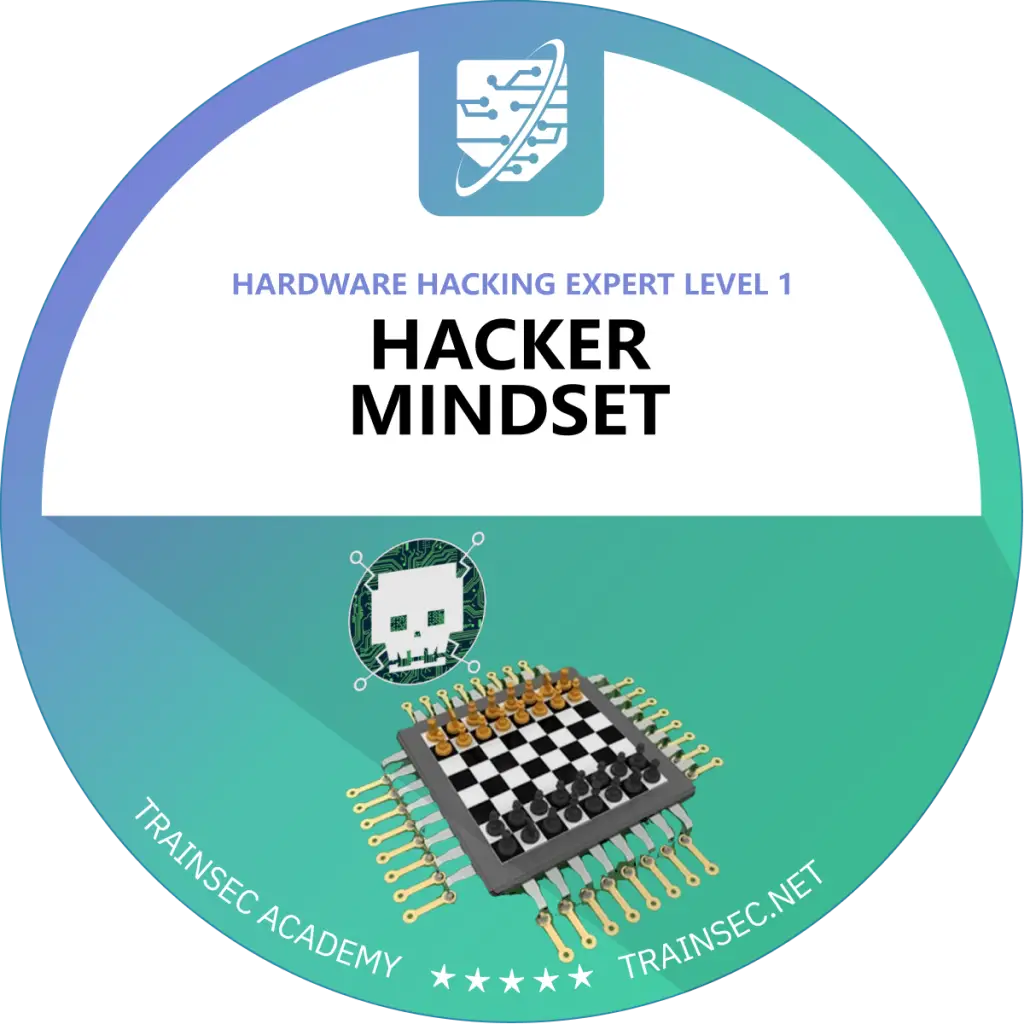
This class explores different kinds of hacking scenarios, detailing the strategies and methodologies specific to hardware hacking. Students will learn the systematic approach to identify vulnerabilities and exploit embedded systems effectively.
Student Achievements: Students will understand various hacking scenarios, grasp the strategic approaches in hardware hacking, and learn the methodologies to systematically analyze and exploit embedded system vulnerabilities.
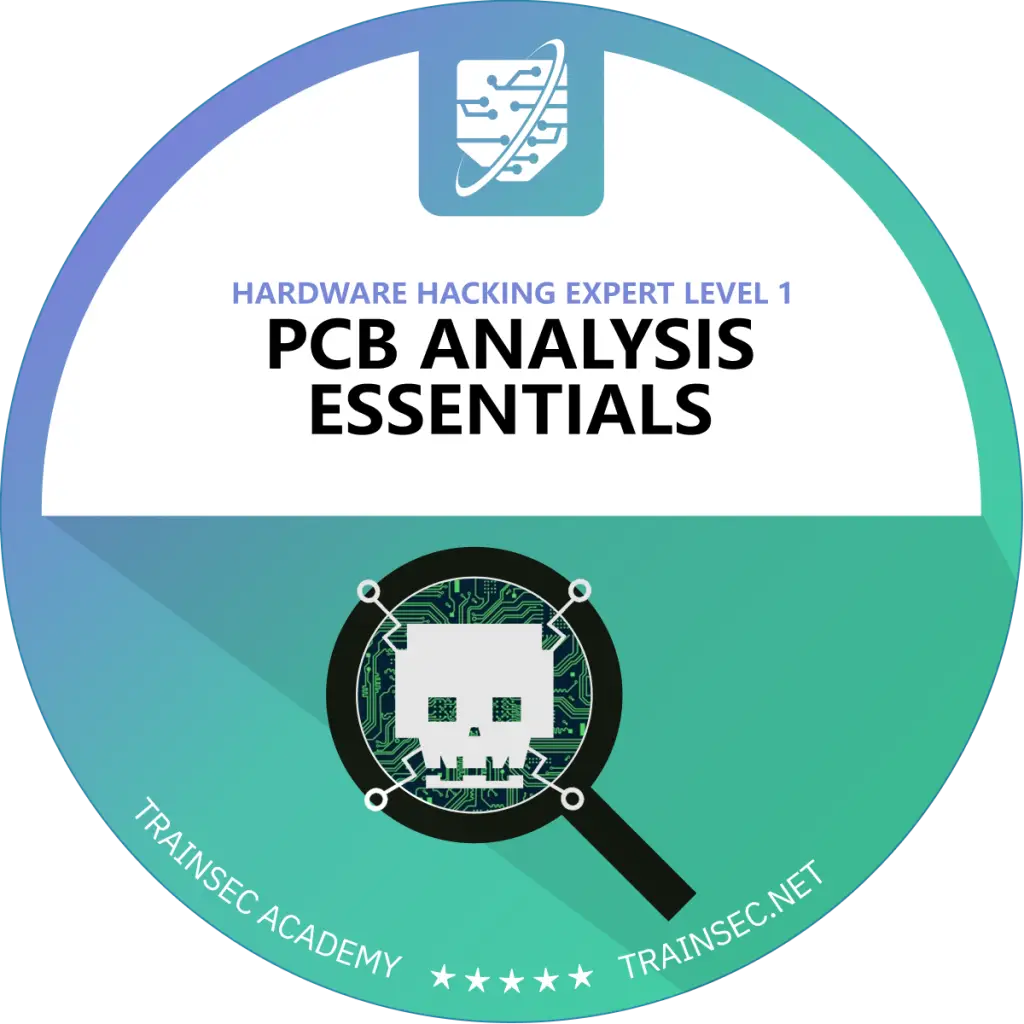
This class teaches students how to identify and define various components of embedded systems. Topics include safely disassembling devices, understanding PCBs, identifying entities of interest, and recognizing smart chips, communication methods, storage, and user interfaces.
Student Achievements: Students will develop the skills to methodically disassemble and analyze embedded systems, identify critical components, and document their findings for further analysis.
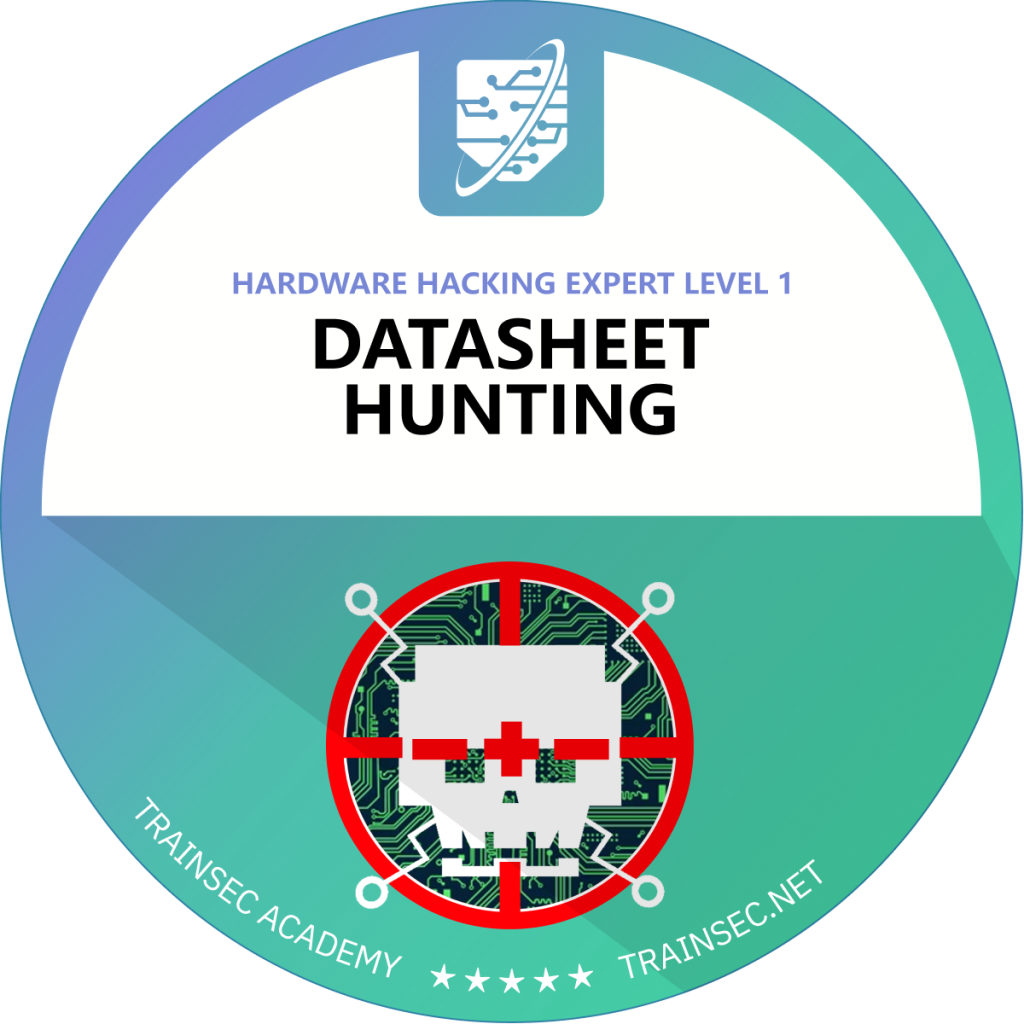
Focused on the importance of datasheets, this class covers how to find and read them, and how to identify and record points of interest. It emphasizes the role of datasheets in understanding and hacking hardware.
Student Achievements: By the end of this class, students will be proficient in locating and interpreting datasheets, which are crucial for understanding and manipulating embedded system componentsc
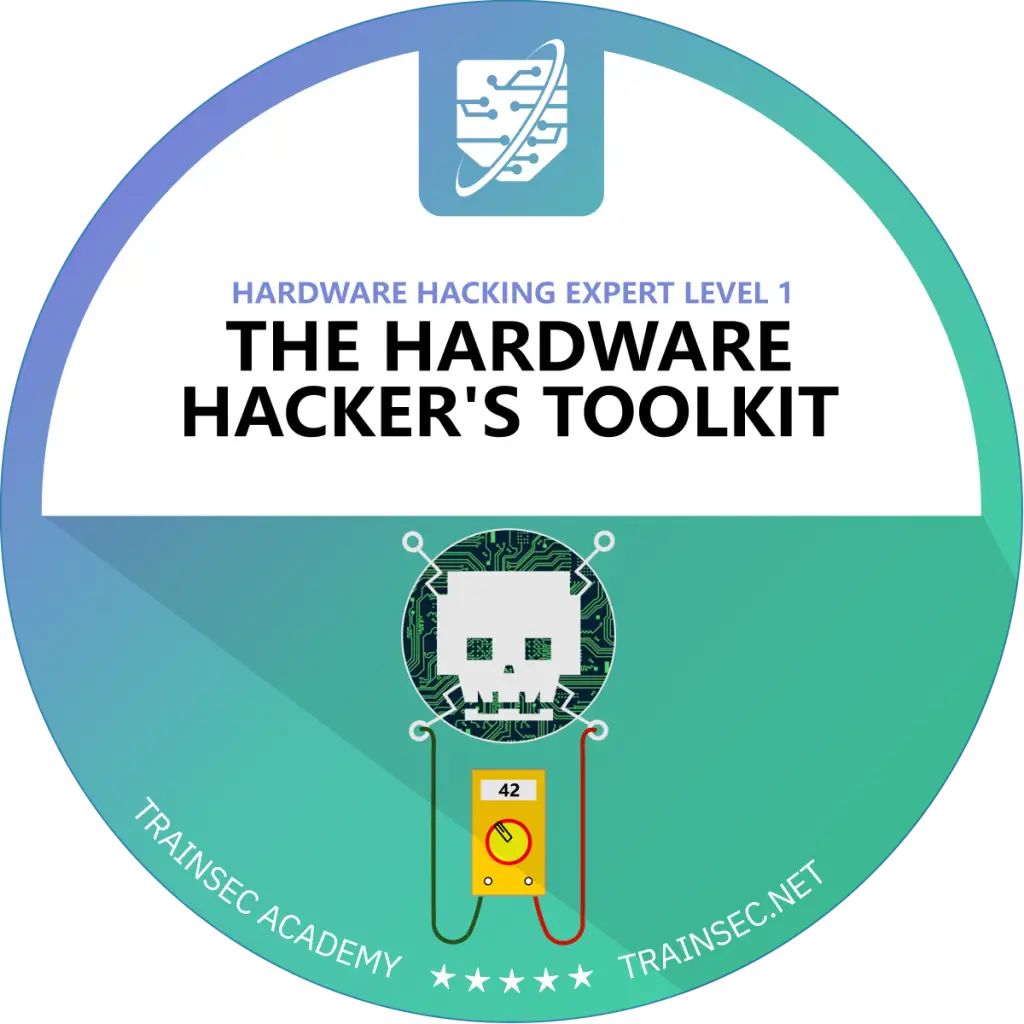
This class introduces the essential tools for hardware analysis, including power supplies, voltmeters, oscilloscopes, protocol analyzers, and RF sniffers. It also covers basic soldering techniques and provides further reading for in-depth understanding.
Student Achievements: Students will become familiar with various analytical tools, learn basic soldering skills, and understand how to apply these tools in hardware hacking projects
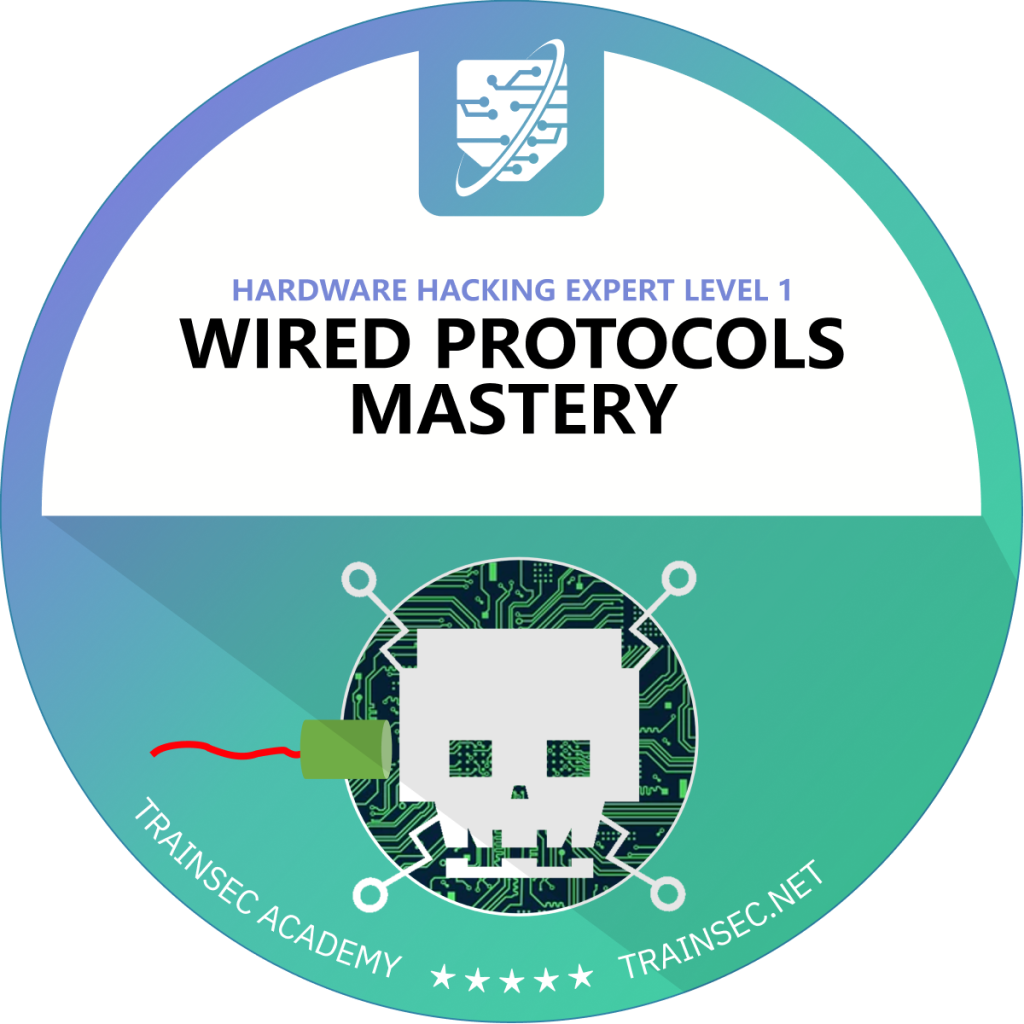
Students will learn about the significance of communication in embedded systems, types of wired communication (serial and parallel), common protocols (UART, I2C, SPI, JTAG, RS232, CAN bus, USB, Ethernet), and their topologies.
Student Achievements: By the end of this class, students will understand the basics of wired communication protocols and their applications in embedded systems, preparing them for more detailed protocol analysis.
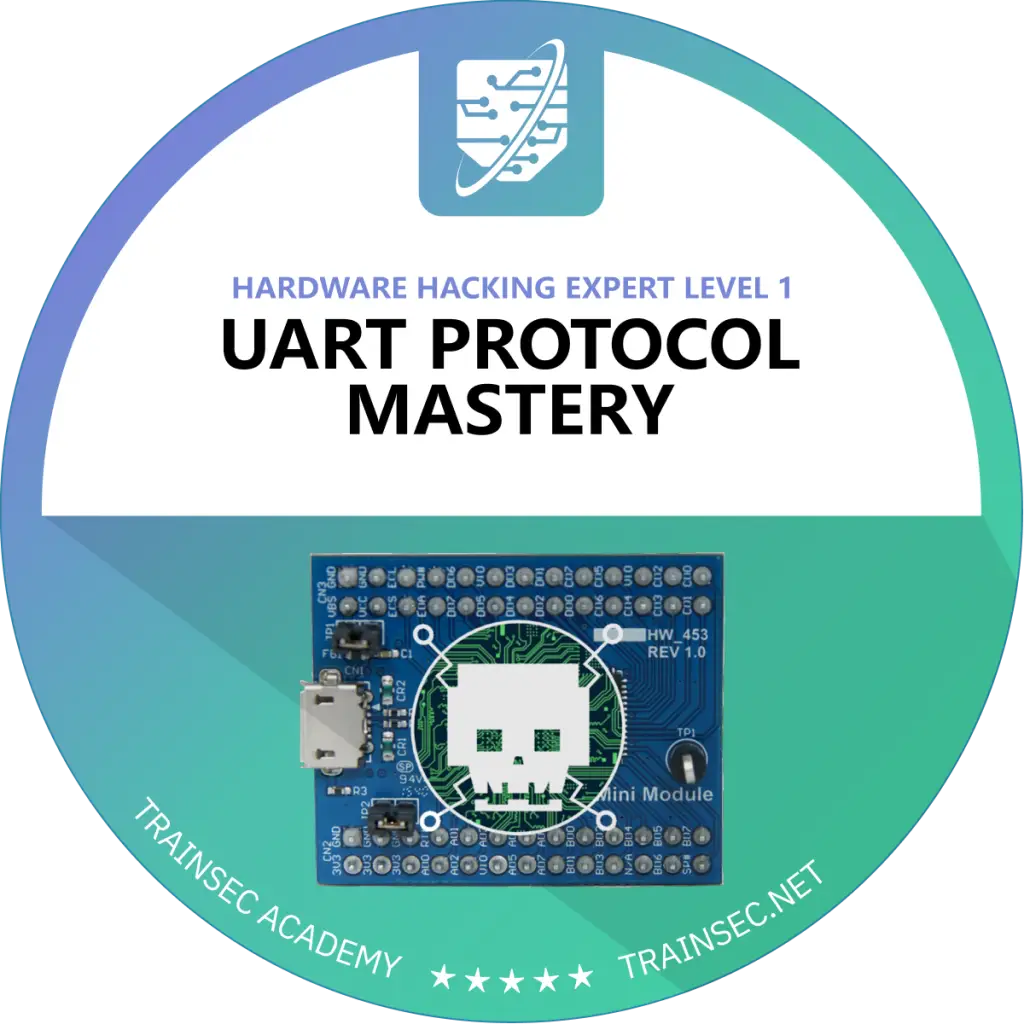
This class covers UART communication protocols, including physical attributes, signal identification, framing, flow control, and recommended tools. Demonstrations will show how to set up a UART link and sniffer.
Protocol Use: UART (Universal Asynchronous Receiver/Transmitter) is used for serial communication between microcontrollers and other hardware peripherals.
Student Achievements: Students will gain practical knowledge of UART protocols, enabling them to set up and analyze UART communication links effectively.

Students will learn about UART-driven protocols such as RS232, RS422, and RS485, understanding why they exist, their importance, and hacking tips.
Protocols Use:
Student Achievements: By the end of this class, students will be able to work with various UART-driven protocols, recognizing their uses and potential vulnerabilities.
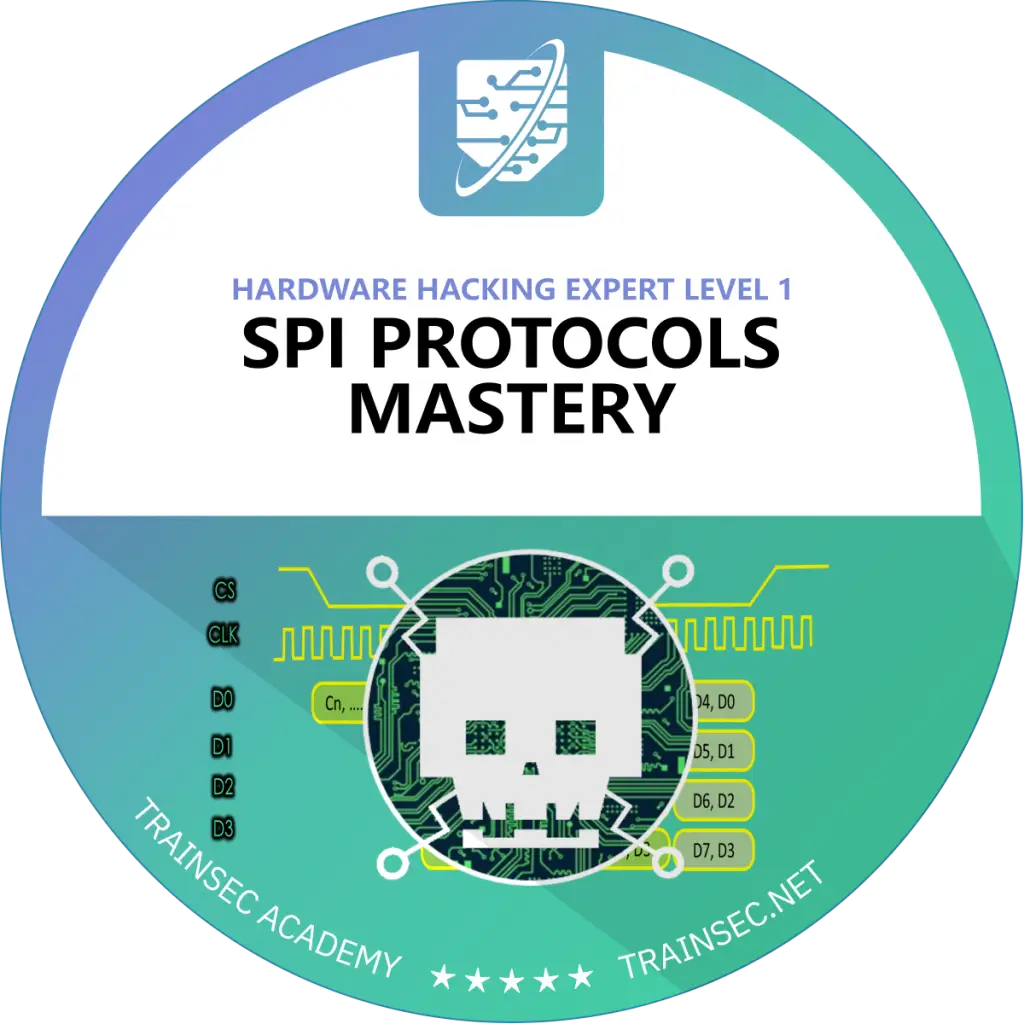
This class offers an in-depth look at SPI protocols, including definitions, physical attributes, signal identification, and advanced modes. Students will learn recommended tools and set up an SPI sniffer.
Protocol Use: SPI (Serial Peripheral Interface) is used for high-speed communication between microcontrollers and peripheral devices such as firmware storage devices, memory, sensors and SD cards.
Student Achievements: Students will master the SPI protocol, from basic concepts to advanced applications, enhancing their ability to hack and analyze SPI communication.

Focusing on I2C protocols, this class covers definitions, physical attributes, session signal definitions, master-slave sequences, and interesting aspects of I2C. Students will set up an I2C sniffer.
Protocol Use: I2C (Inter-Integrated Circuit) is used for communication between multiple integrated circuits using a simple two-wire interface.
Student Achievements: By the end of this class, students will have a thorough understanding of I2C protocols and be capable of setting up and analyzing I2C communication links.
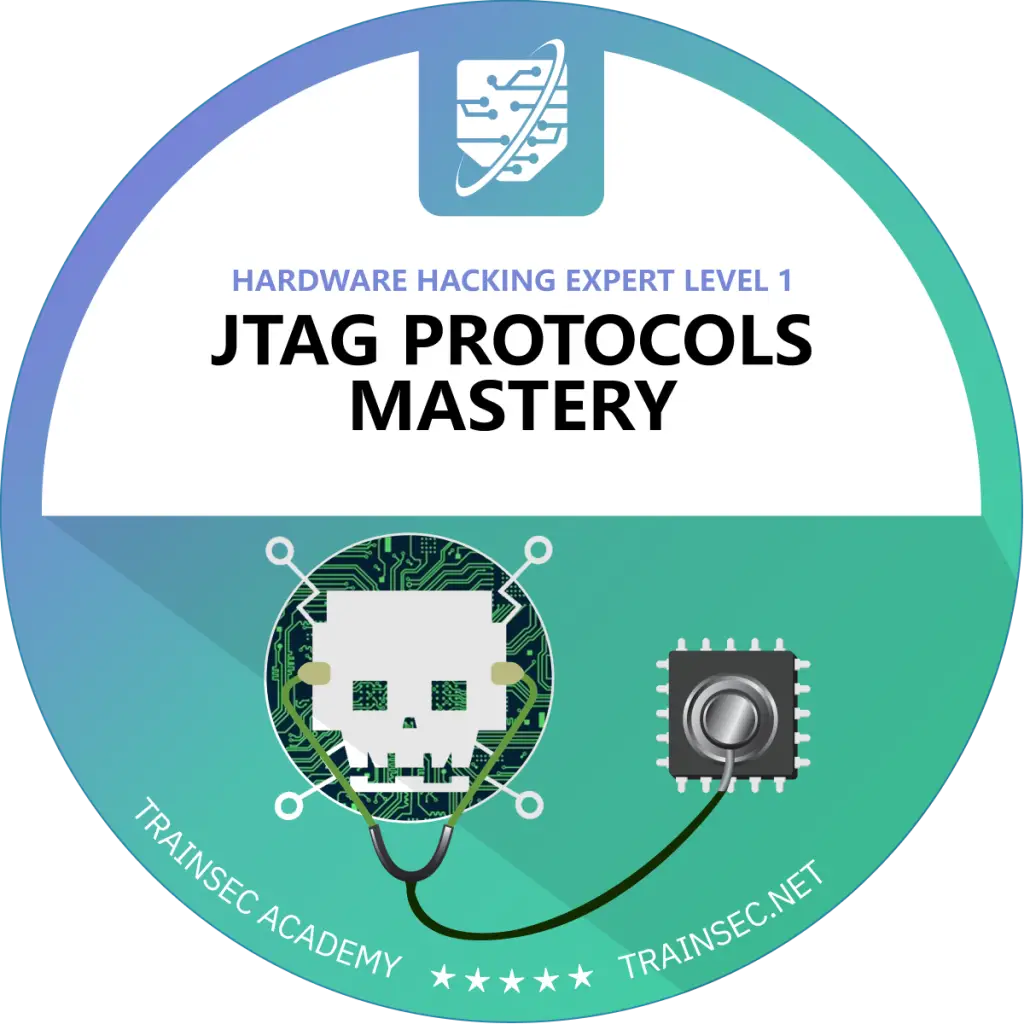
This class explores JTAG protocols, covering definitions, physical attributes, operational mechanics, uses, recommended tools, and practical demonstrations for firmware extraction and boundary scanning.
Protocol Use: JTAG (Joint Test Action Group) is primarily used for debugging and testing embedded systems, allowing direct access to the hardware.
Student Achievements: Students will gain expertise in JTAG protocols, enabling them to perform advanced hardware hacking tasks such as firmware extraction and debugging.
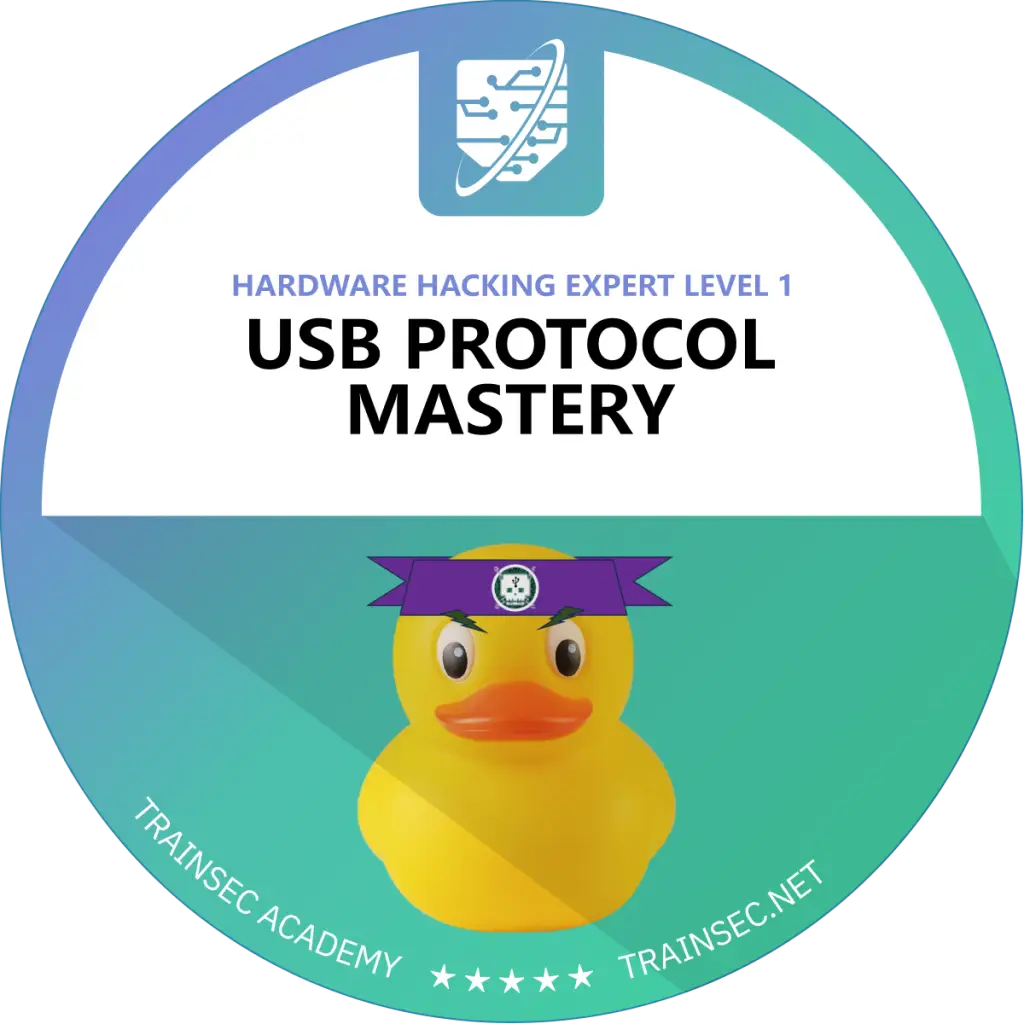
Students will learn about USB protocols, including definitions, topologies, physical attributes, protocol basics, device structures, classes, enumeration, and live demonstrations of USB sniffing and analysis.
Protocol Use: USB (Universal Serial Bus) is used for connecting computers to peripheral devices like keyboards, mice, and storage devices, providing standardized communication and power supply.
Student Achievements: By the end of this class, students will be proficient in understanding and analyzing USB protocols, preparing them for practical USB hacking projects
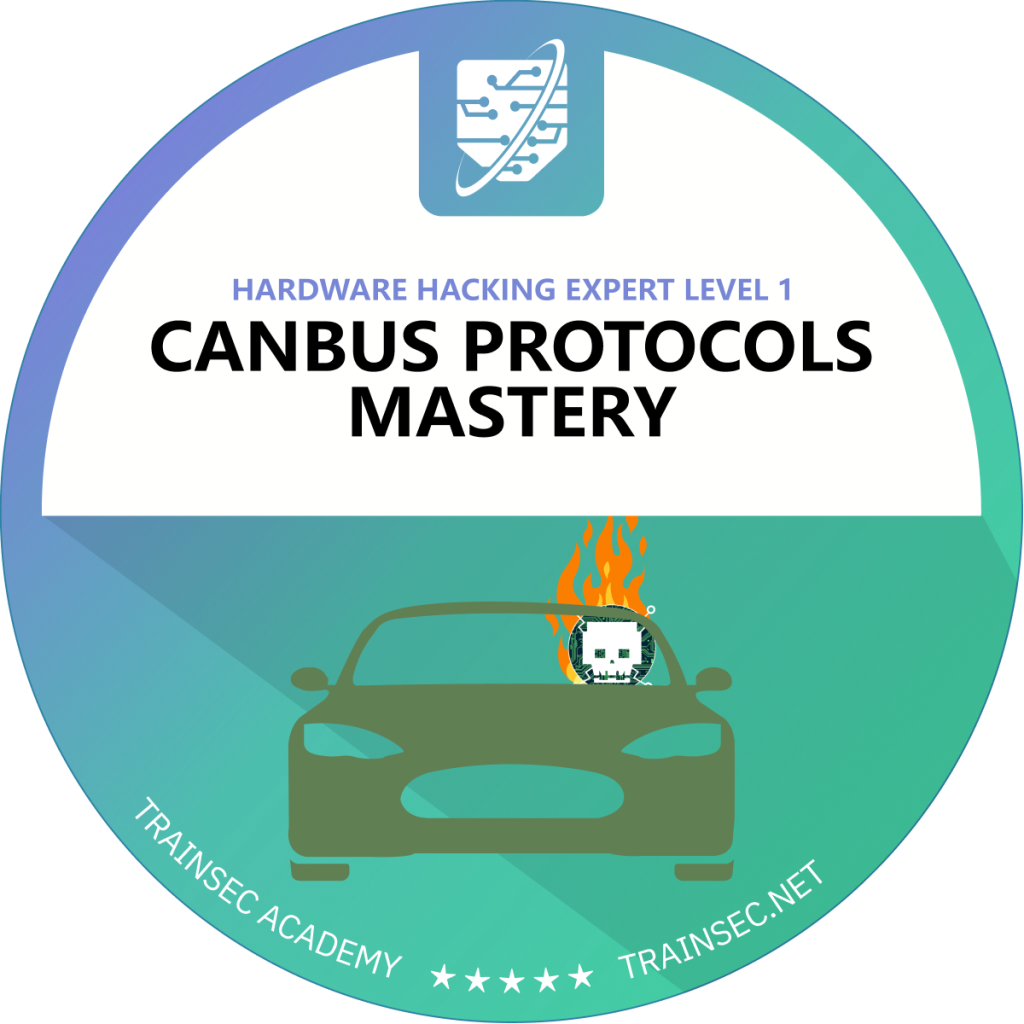
This class covers CAN Bus protocols, including definitions, physical attributes, signal identification, packet formats, network arbitration, recommended tools, and attack vectors such as sniffing, DoS, and MITM.
Protocol Use: CAN Bus (Controller Area Network) is used in automotive and industrial applications for robust communication between microcontrollers without a host computer.
Student Achievements: Students will master CAN Bus protocols and learn how to identify and exploit vulnerabilities in CAN Bus networks.
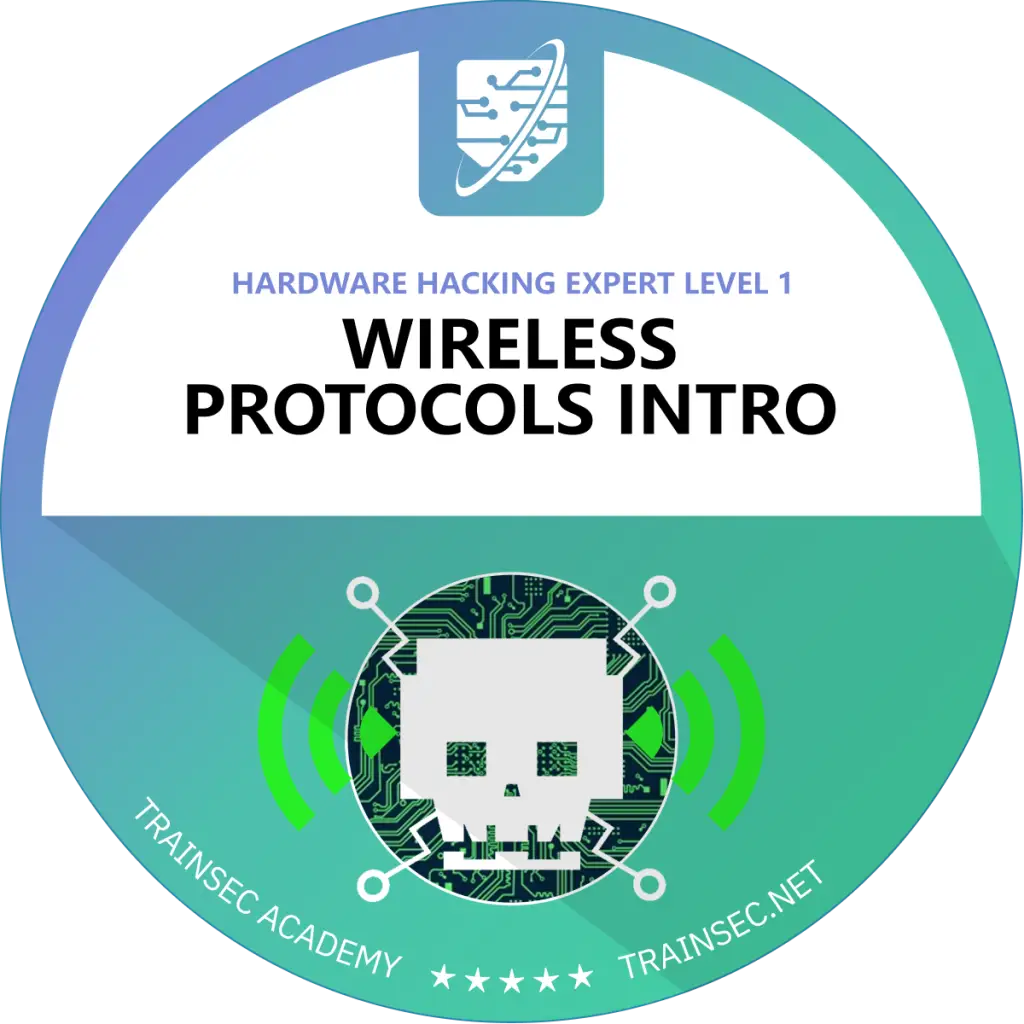
An overview of wireless communication types, topologies, digital wireless basics, radio concepts, and common protocols (RFID, NFC, Bluetooth, Wi-Fi). Students will learn about the conversion of RF signals to digital data.
Student Achievements: By the end of this class, students will understand the fundamentals of wireless communication and be familiar with key wireless protocols used in embedded systems.
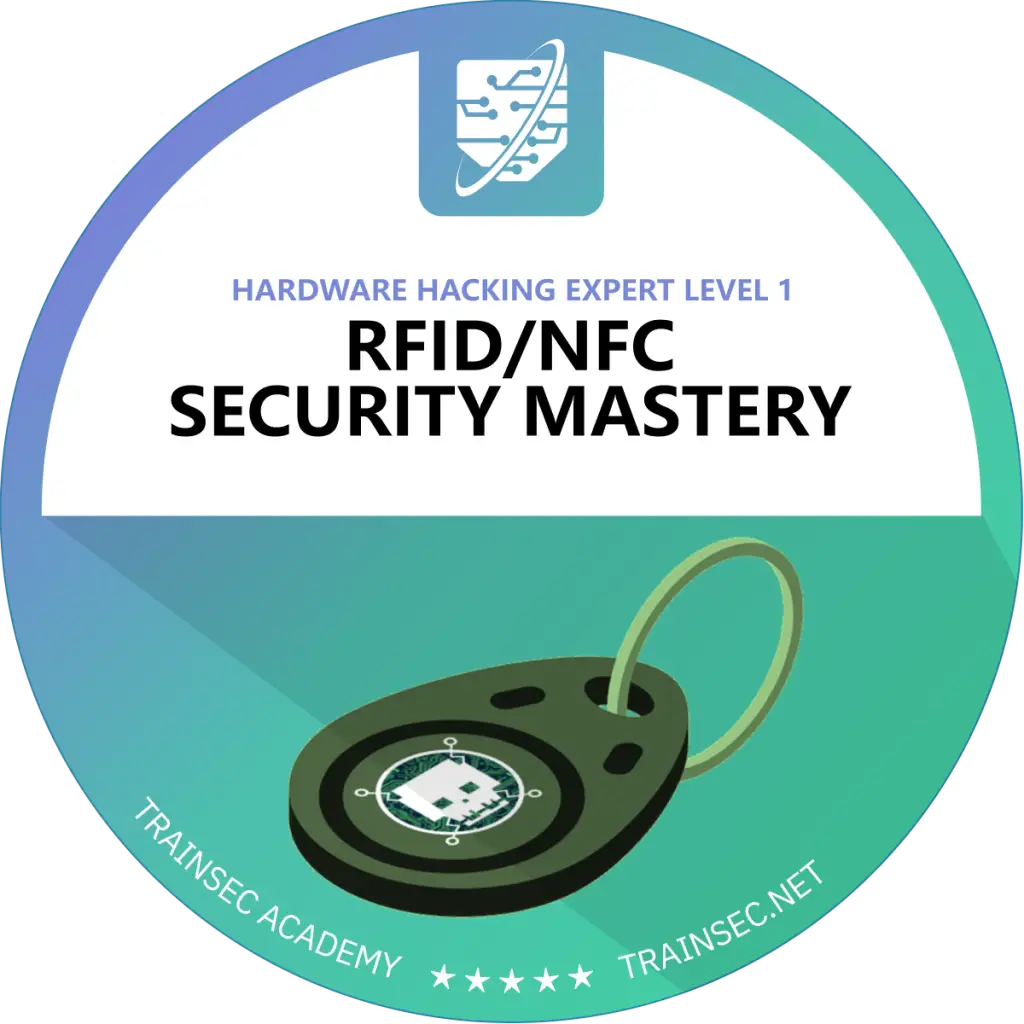
This class focuses on RFID and NFC technologies, covering definitions, physical attributes, vulnerabilities, common protocols, and attack vectors. Students will learn about tools and techniques for hacking RFID and NFC systems.
Protocol Use:
Student Achievements: Students will gain practical knowledge of RFID and NFC technologies, enabling them to identify vulnerabilities and perform attacks on these systems.
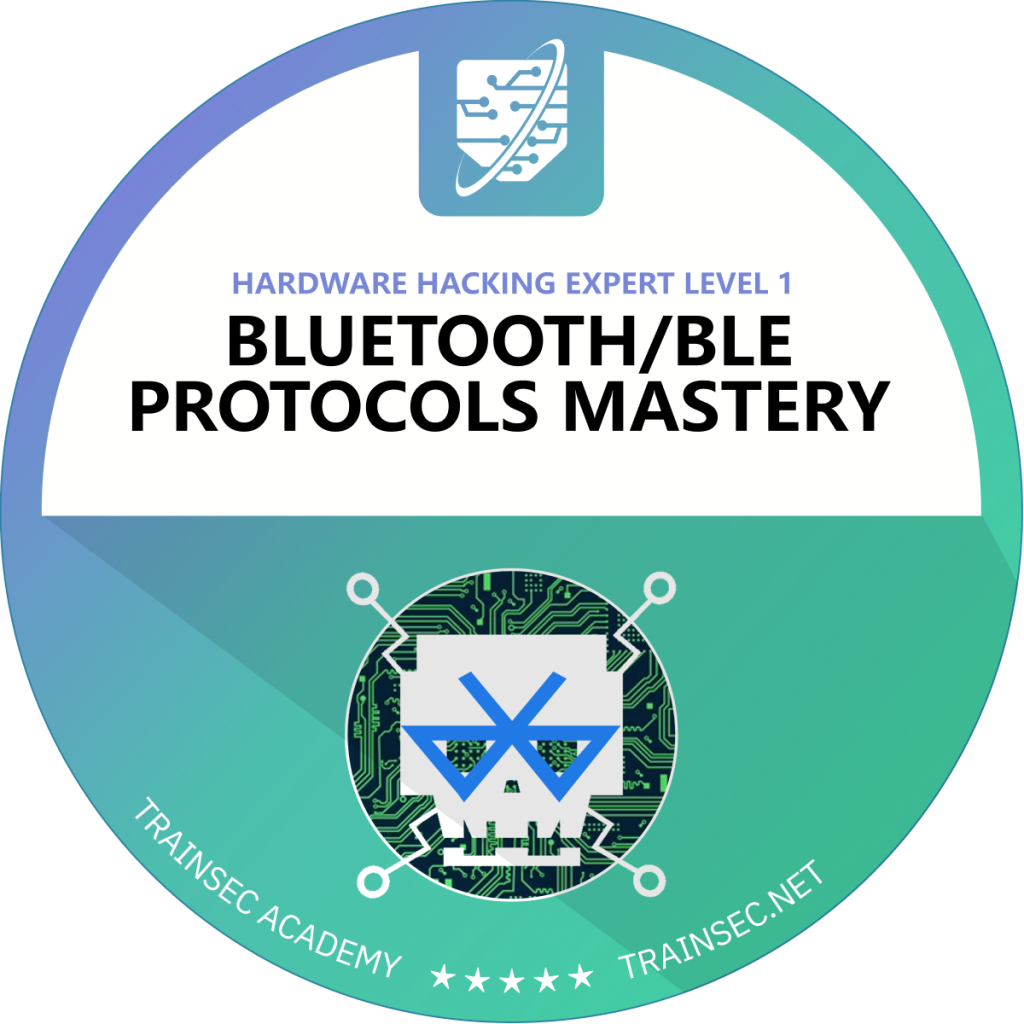
Students will explore Bluetooth and BLE technologies, including their architecture, protocols, pairing processes, security measures, and tools for analysis. The class includes a live demo of BLE sniffing with Wireshark.
Protocol Use:
Student Achievements: By the end of this class, students will be proficient in Bluetooth and BLE protocols, capable of performing security assessments and analyzing wireless communication.
One of my goals in this 3-level series is to enable you to develop and customize your own tools to save Hundreds of $$$.
With that said, for the absolute beginner in electronics, there are some basic tools that you must have if you see your future in Hardware Hacking.
Furthermore, tool usage is required for levels II and III and optional for Level I.
During Level I classes I will demonstrate the usage of the tools, so if you want to replicate my demonstration by yourself (highly recommended), please purchase the toolset as early as Level I.

Transform yourself from a novice to a seasoned hardware hacking expert with our “Hardware Hacking Expert” course. This comprehensive path, combining dynamic lectures and hands-on exercises, equips you with the skills, resources, and confidence to explore, manipulate, and exploit electronic systems. No prior hardware experience is required!
$1,550
or $75 X 10 installments
Join our blog and community for free resources and personal connections.
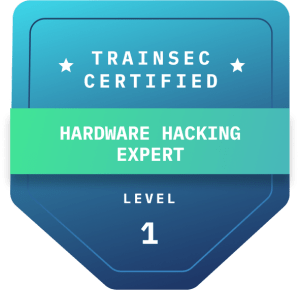
Hardware Hacking Expert – Level 1 with 35+ hours of hands-on training in device teardown, firmware extraction, and physical attack techniques. Learn more inside.
Course Provider: Organization
Course Provider Name: TrainSec
Course Provider URL: https://trainsec.net/
Course Mode: Online
Course Workload: PT35H
Duration: PT35H
Course Type: Paid
Course Currency: USD
Course Price: 350